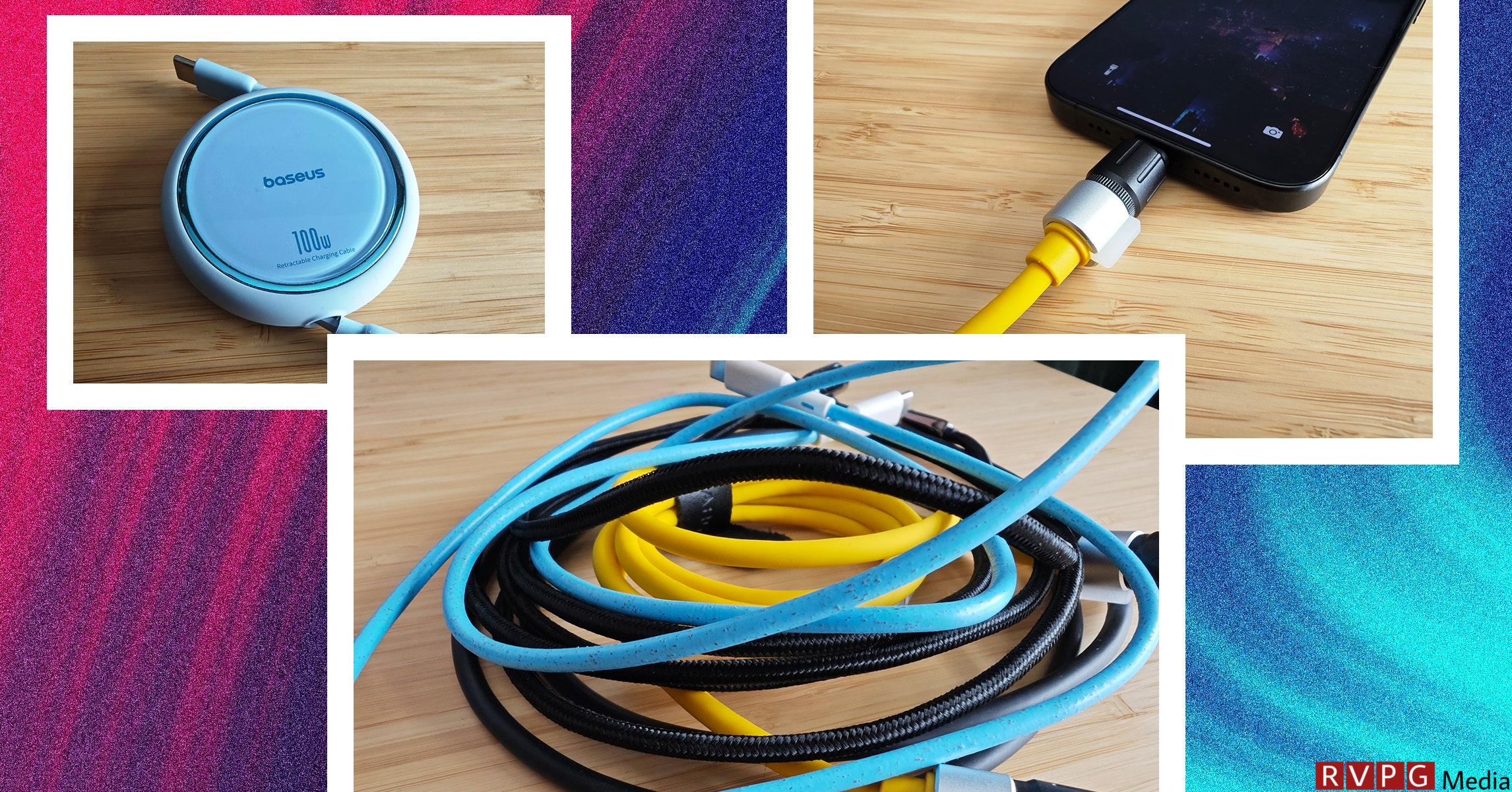With different standards and charging technologies in use, figuring out what a cable can do is much harder than it should be. There is a lot to know when shopping.
USB standards: The Universal Serial Bus (USB) standard dates back to 1996, but has seen many new standards, revisions, and connector types in the years since. Instead of going through them all here, let’s try to highlight what matters.
Connections: While USB-C is fortunately becoming a standard connection type, you need cables with connectors that fit your existing devices. These days that could still mean USB-A, Lightning or even MicroUSB. Remember that the performance of each cable is limited to the oldest connection type.
Data: The data transfer speed is always specified in megabits per second (Mbps) or gigabits per second (Gbps). You can use the standard to determine the speed that a cable should achieve:
- USB 2.0 supports 480 Mbps
- USB 3.0 supports 5Gbps
- USB 3.1 supports 10 Gbit/s
- USB 3.2 Gen 1 supports 5Gbps
- USB 3.2 Gen 2 supports 10 Gbps
- USB 3.2 Gen 3 supports 20 Gbps
- USB 4.0 supports 40 Gbit/s
Perfomance: While cable manufacturers always specify the maximum charging rate, your device determines how much power it uses. Therefore, it is important to know which standards it supports and to pair your cable with the right power adapter. The charging power of a cable is measured in watts (W). Sometimes manufacturers indicate the specifications of the cable in small print. If W is not listed, you can calculate it by multiplying the voltage (V) and current (A) if they are listed.
Basic USB-C cables are passive and can only carry up to 60W. Cables capable of carrying 100W or more, sometimes referred to as active, must contain E-marker chips that identify the cable and its capabilities.
The Power Delivery (PD) standard is as close to a common standard as possible. Some manufacturers such as OnePlus, Oppo and Xiaomi still have proprietary charging standards. Then there’s Qualcomm’s Quick Charge (QC) standard, which was the most popular for phones for many years, although Quick Charge 4+ supports PD. Even PD has a variant called Programmable Power Supply (PPS), which is part of the USB PD 3.0 standard. PPS enables real-time adjustments to maximize efficiency and charge phones like Samsung’s Galaxy S22 range at up to 45W instead of the usual 18W. The latest addition to PD is Extended Power Range (EPR), which allows USB-C cables to transmit up to 240 watts (previously they were limited to 100W).
Thunderbolt was a proprietary interface developed by Intel and Apple, but is now open for royalty-free use (still certified by Intel). With Thunderbolt 3, the standard takes over the USB-C port and enables data transfer speeds of up to 40 Gbps and can deliver 100 watts of power using the PD standard. Thunderbolt 4 brings several improvements, mainly affecting the video signal (support for two 4K displays or one 8K display). It also supports the USB 4 standard and is backwards compatible with previous standards.
Cable certification: There are different types of cable certification. When a cable is certified, it usually means it has been independently tested and meets certain standards. This gives you as a buyer the certainty that your cable will deliver the performance specified by the manufacturer. Certification can be expensive, so many cable manufacturers forego it, but that doesn’t necessarily mean their cables are poor quality. The USB Implementers Forum (USB-IF) is a non-profit organization dedicated to the advancement of USB technology. Run by members including Apple, Google, HP, Microsoft and Intel, it sets specifications and offers certifications. When a cable is USB-IF certified, it has been tested to ensure it meets its standards. Apple has its own Made for iPhone (MFi) certification for Lightning cables. Intel certifies Thunderbolt cables. Certified cables usually have the corresponding logo on the connector (Thunderbolt cables have a lightning bolt, for example).
